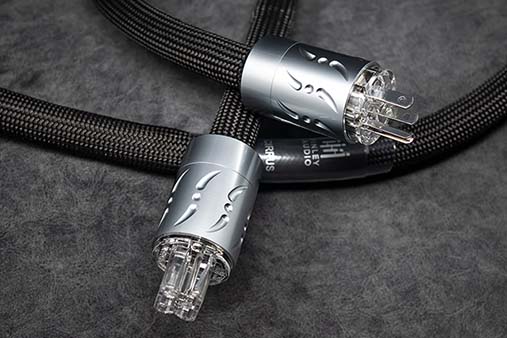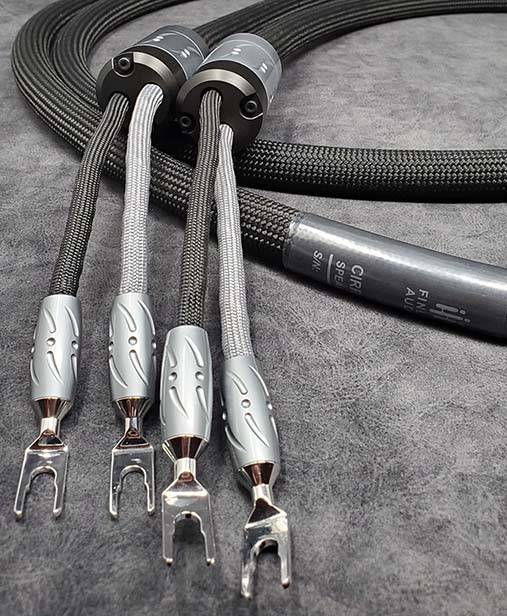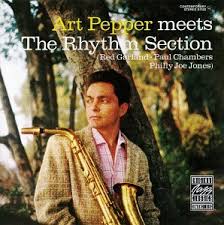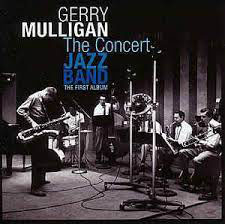Finley Audio’s Cirrus Series Cables by Greg Simmons – Page 2

Listening to the Cirrus Cables
I began the Finley installation – which took a couple of weeks as I spent time with each addition before adding the next – with the Cirrus AC power cables. This was not my first go-round with these power cables. I’d been loaned a pair of the prototypes for some feedback about two years ago, and at the time, I threatened not to return them. I’m pleased to report the production versions were as good as I remembered them. They lowered background noise a bit. More importantly, they seemed to allow the amplifier to breathe easier, with less strain and tension on the music and a more relaxed overall presentation. With my Cary V12 amplifier, that stress presents itself as (depending on the recording) little hardness in the treble and a little reticent in the low end. With the Cirrus power cords in place, bass went deeper, got tighter, and was also more detailed – double basses sounded more wooden, and strings had more pronounced metallic vibrato. The tension in the treble was also greatly reduced to the point of insignificance. The overall sound was more organic. I’d experienced these exact phenomena with the prototypes, and the finished product performed the same trick. I’ve gotten this effect with other cables, but it required more of them – interconnects and speakers included. Keep in mind; this was only with the power cables installed. These are really good AC power cables.
The speaker cables – which I installed next – built on those improvements. The most notable enhancement was an additional reduction in image smearing and fuzziness. Notably, mono records received some attention here. In general, a monaural image can sound like musicians stacked on top of each other in a vertical row, but when the Cirrus speaker cables were installed, I began to hear things like Louis Armstrong standing proud of the rest of his band, clearly in front, or snappier rim shots with improved impact. Stereo images also became clearer; not etched exactly, but certainly more corporeal. I perceived this as clear evidence that the speaker cables were, in fact, providing a finer degree of focus than I’d been hearing through my own cables. 

By the time I got to the interconnects, the improvements became more subtle. There was still a degree of improvement in the obvious audibles: a little more enhanced resolution and detail and the like, but the cherry they placed on top of this Sunday was an overall organic sound. Everything just sounded a little more natural and a little more real – again, a little more organic (This article has been sponsored by the word ‘organic’). The soundstage was also more coherent. On something like Horace Parlan’s Us Three (Blue Note, Music Matters, MMBST-84037, 1961/2015), George Tucker’s bass is enormous, tall, and in front of the piano where it’s supposed to be. The lower noise floor and associated resolution allowed the subtle spatial cues of air and reverb to become more clearly audible. Those little cues are like the Force: they surround the music, flow through it, and bind it all together (please don’t sue me for a bad analogy Mr. Lucas). It’s the difference between hearing instruments and hearing instruments interacting with each other in a space – the connective tissue if you will.
Listening to Some Tunes
 There were a few ‘Hold on! Let me play that again because it sounded really cool’ moments over the course of this review, but one of my favorites was the Dvorak Cello Concerto, Opus 104, as performed by the magnificent Pierre Fournier with the Berlin Philharmonic conducted by some guy named George Szell, who was no slouch himself (Konzert Fur Violincello Und Orchester H-Moll 104, Deutsche Grammophon SLPM 138 755, 1961). At the conclusion of the 1st allegro movement, there is a thunderous passage where the brass explodes behind Fournier, trombones to the right of center, trumpets directly behind him. The ‘bones have so much bite, so much physical force, that they’re in danger of swallowing Fournier whole. Yet through this short bombardment the cello manages to remain in front, receding into the din a little, but never subsumed, still clear and emphatic. I’ve heard this passage many times, but never with such clarity and visceral authority. The cables’ transparency allowed that passage to hit me squarely in the face, commanding my attention in a most satisfying way, precisely the kind of improvement most people are looking for when they invest in any new component. I listened to that passage three consecutive times one afternoon and three more two days later.
There were a few ‘Hold on! Let me play that again because it sounded really cool’ moments over the course of this review, but one of my favorites was the Dvorak Cello Concerto, Opus 104, as performed by the magnificent Pierre Fournier with the Berlin Philharmonic conducted by some guy named George Szell, who was no slouch himself (Konzert Fur Violincello Und Orchester H-Moll 104, Deutsche Grammophon SLPM 138 755, 1961). At the conclusion of the 1st allegro movement, there is a thunderous passage where the brass explodes behind Fournier, trombones to the right of center, trumpets directly behind him. The ‘bones have so much bite, so much physical force, that they’re in danger of swallowing Fournier whole. Yet through this short bombardment the cello manages to remain in front, receding into the din a little, but never subsumed, still clear and emphatic. I’ve heard this passage many times, but never with such clarity and visceral authority. The cables’ transparency allowed that passage to hit me squarely in the face, commanding my attention in a most satisfying way, precisely the kind of improvement most people are looking for when they invest in any new component. I listened to that passage three consecutive times one afternoon and three more two days later.
 Next up – randomly chosen for no particular reason other than I hadn’t listened to it for a while – is an excellent first monaural pressing of Art Pepper’s Smack Up (Contemporary M3602, 1962). Pepper’s earlier records were marked by a certain inside-the-lines formalism that – while always excellent – can seem a little tame by the furthest standards of the day. By 1960, when this record was recorded, art’s playing had become looser, with improvisations that genuinely sounded like he was creating on the fly instead of pulling from a bag of tricks. That isn’t to say that art is heading into the Ornette Coleman wilderness – he’s definitely not (although the album includes Coleman’s composition “Tears Inside”) – but there is an unrehearsed fluidity to his playing that makes it more compelling. Plus, the record also features the great but under-recorded Jack Sheldon on Trumpet. Folks really love Pepper’s Meets the Rhythm Section and Plus Eleven, and they’re both great records, but for my money I’d take Smack Up over either of them. It’s a deeper performance. For our purposes here, Smack Up is also another in a long line of excellent Roy DuNann recordings on the Contemporary label. With the Finley cables installed, the recording was simply more realistic. Even in mono, there’s a sense of spaciousness to the recording that was missing before, and the instrument capture is spot on. Great stuff!
Next up – randomly chosen for no particular reason other than I hadn’t listened to it for a while – is an excellent first monaural pressing of Art Pepper’s Smack Up (Contemporary M3602, 1962). Pepper’s earlier records were marked by a certain inside-the-lines formalism that – while always excellent – can seem a little tame by the furthest standards of the day. By 1960, when this record was recorded, art’s playing had become looser, with improvisations that genuinely sounded like he was creating on the fly instead of pulling from a bag of tricks. That isn’t to say that art is heading into the Ornette Coleman wilderness – he’s definitely not (although the album includes Coleman’s composition “Tears Inside”) – but there is an unrehearsed fluidity to his playing that makes it more compelling. Plus, the record also features the great but under-recorded Jack Sheldon on Trumpet. Folks really love Pepper’s Meets the Rhythm Section and Plus Eleven, and they’re both great records, but for my money I’d take Smack Up over either of them. It’s a deeper performance. For our purposes here, Smack Up is also another in a long line of excellent Roy DuNann recordings on the Contemporary label. With the Finley cables installed, the recording was simply more realistic. Even in mono, there’s a sense of spaciousness to the recording that was missing before, and the instrument capture is spot on. Great stuff!
 The alchemy of cables is always found in the little details that audiophiles get so excited about (though no one else does). On Gerry Mulligan’s The Concert Jazz Band (Verve MG VS 58388, 1960, reissue), a record I love but that I’d previously written off of as a well-recorded wall of sound, the hi-hat and ride cymbals were suddenly deeply recessed. On Ellis Marsalis’s final recording, For All We Know (Nouvelle Records NVN004), before he regrettably succumbed to the Coronavirus, his solo piano expresses incredible harmonic depth with bass chords that sustain seemingly forever and layers of overtones reproduced in their fullest incandescence. On “Happy Reunion” from Joe Henderson’s State of the Tenor – Live at the Village Vanguard Vol. 1 (Blue Note/Tone Poet BT-85123, 2020), Al Foster taps out a wooden block deep in stage right that I’d never noticed before. Sure, these might seem like small details, but those details reflect a real overall improvement in clarity and detail, and as the saying goes, the details are where the money’s at.
The alchemy of cables is always found in the little details that audiophiles get so excited about (though no one else does). On Gerry Mulligan’s The Concert Jazz Band (Verve MG VS 58388, 1960, reissue), a record I love but that I’d previously written off of as a well-recorded wall of sound, the hi-hat and ride cymbals were suddenly deeply recessed. On Ellis Marsalis’s final recording, For All We Know (Nouvelle Records NVN004), before he regrettably succumbed to the Coronavirus, his solo piano expresses incredible harmonic depth with bass chords that sustain seemingly forever and layers of overtones reproduced in their fullest incandescence. On “Happy Reunion” from Joe Henderson’s State of the Tenor – Live at the Village Vanguard Vol. 1 (Blue Note/Tone Poet BT-85123, 2020), Al Foster taps out a wooden block deep in stage right that I’d never noticed before. Sure, these might seem like small details, but those details reflect a real overall improvement in clarity and detail, and as the saying goes, the details are where the money’s at.
USA! USA! USA!
One other minor point to make about the Finley cables: In the (hopefully) aftermath of the pandemic, Americans seem to have a heightened awareness of our own small businesses, many of which suffered badly over the last eighteen months. Yeah, you could go online and buy some really expensive cables from one of the big-name manufacturers, but if you’re interested in supporting the entrepreneurs around you who really have something good to offer, here’s a great opportunity to do so: Great cables proudly handmade in the United States by four guys who have put in the time and research and are trying – successfully, I might add – to build a better mousetrap. Think about who you’re spending your money with and make good choices, especially since all of the Finley cables come with a forty-five-day money-back satisfaction guarantee.
Conclusion
One of the hazards of writing about audio equipment is giving a great review of the greatest thing you’ve ever heard, only to find that the next thing that strolls through the door is even better. If everything is the best ever, eventually, the author’s credibility is shot, and you might as well be writing ad copy for the marketing department. Last year, or maybe in 2019, I can’t recall, I wrote just such a glowing review of some very good cables from a well-established manufacturer. And now? Well, life goes on, more equipment shows up, and what was at the time an impressively fine-sounding set of cables has indeed been superseded.
 As I’m writing this conclusion, I’m spinning one of my favorite underrated records, Basie and Zoot –Count Basie and Zoot Sims, that is – on the Pablo label (Pablo Records 2310-745). I love this record because it’s a rare Basie small band date. So many of the Count’s records are all orchestrated with three quick piano chords occasionally thrown in for emphasis, which always leaves me wanting more. This record is atypical. There is a lot of piano playing: stride on the up-tempo numbers and plenty of those fat blue chord progressions that Basie put together so beautifully. And because it’s a quartet, he plays the whole way through. Zoot does not overpower the date, as horn players sometimes do, and lays out much of the time. The record might have been more accurately titled, “Basie Plays a Lot and Zoot has enough sense to let him do it.” In the context of this review of the Finley Audio Cirrus cables, everything I said about every other recording I discussed applies here: more resolution, more extension, and more realism, all leading to a better connection with the music. I love listening to this record, and it’s never been as enjoyable as it has over the last few months.
As I’m writing this conclusion, I’m spinning one of my favorite underrated records, Basie and Zoot –Count Basie and Zoot Sims, that is – on the Pablo label (Pablo Records 2310-745). I love this record because it’s a rare Basie small band date. So many of the Count’s records are all orchestrated with three quick piano chords occasionally thrown in for emphasis, which always leaves me wanting more. This record is atypical. There is a lot of piano playing: stride on the up-tempo numbers and plenty of those fat blue chord progressions that Basie put together so beautifully. And because it’s a quartet, he plays the whole way through. Zoot does not overpower the date, as horn players sometimes do, and lays out much of the time. The record might have been more accurately titled, “Basie Plays a Lot and Zoot has enough sense to let him do it.” In the context of this review of the Finley Audio Cirrus cables, everything I said about every other recording I discussed applies here: more resolution, more extension, and more realism, all leading to a better connection with the music. I love listening to this record, and it’s never been as enjoyable as it has over the last few months.
It’s not a secret that many companies’ statement cables have gotten offensively expensive (eighteen-grand for a single one-meter power cable anyone? C’mon, people, are starving out there), but good-sounding cables are always worth an investment. How much of an investment is up to the individual buying them based on associated equipment, what you can afford, etc. These Finley Audio cables are not giant-slaying bargain-basement wires – the most elusive unicorn in all of audio – but I’d be willing to put them up against any set of wires I’ve listened to in a comparable price range and also against some that were significantly more expensive. I’m certain they’d do pretty well. If these cables are in your price range, or even if you’re contemplating more expensive wires, these are definitely worth checking out. Assuming they play well with your other equipment you’d be getting really fine-sounding cables, custom made just for you in whatever configuration you need.
In my system, the Finley Audio Cirrus cables brought out more of the best parts of almost every record I listened to and isn’t that the whole point? I haven’t heard every wire out there, so I’m not prepared to say these are the best cables ever, and I don’t want to sound like a complete fanboy, but I can state unreservedly that with the Finley Audio Cirrus cables installed, my system has never sounded better. Well done, gentlemen.

greg simmons
Finley Audio Cirrus Cables Specifications:
Cirrus Power Cables: $985 1m +$200 per each additional .5m, 15/20A
Cirrus Interconnects: $1,285 1m +$200 each additional .5m RCA/XLR.
Cirrus Phono Cable: $1,285 1m +$200 each additional .5m DIN/RCA.
Cirrus Speaker Cables: $2,785 2m +$500 each additional .5m spade/banana
Website: www.finleyaudio.com
Email: contact@finleyaudio.com
Stereo Times Masthead
Publisher/Founder
Clement Perry
Editor
Dave Thomas
Senior Editors
Frank Alles, Mike Girardi, Key Kim, Russell Lichter, Terry London, Moreno Mitchell, Paul Szabady, Bill Wells, Mike Wright, Stephen Yan, and Rob Dockery
Current Contributors
David Abramson, Tim Barrall, Dave Allison, Ron Cook, Lewis Dardick, Dan Secula, Don Shaulis, Greg Simmons, Eric Teh, Greg Voth, Richard Willie, Ed Van Winkle, and Rob Dockery
Music Reviewers:
Carlos Sanchez, John Jonczyk, John Sprung and Russell Lichter
Site Management Clement Perry
Ad Designer: Martin Perry






Be the first to comment on: Finley Audio’s Cirrus Series Cables by Greg Simmons – Page 2